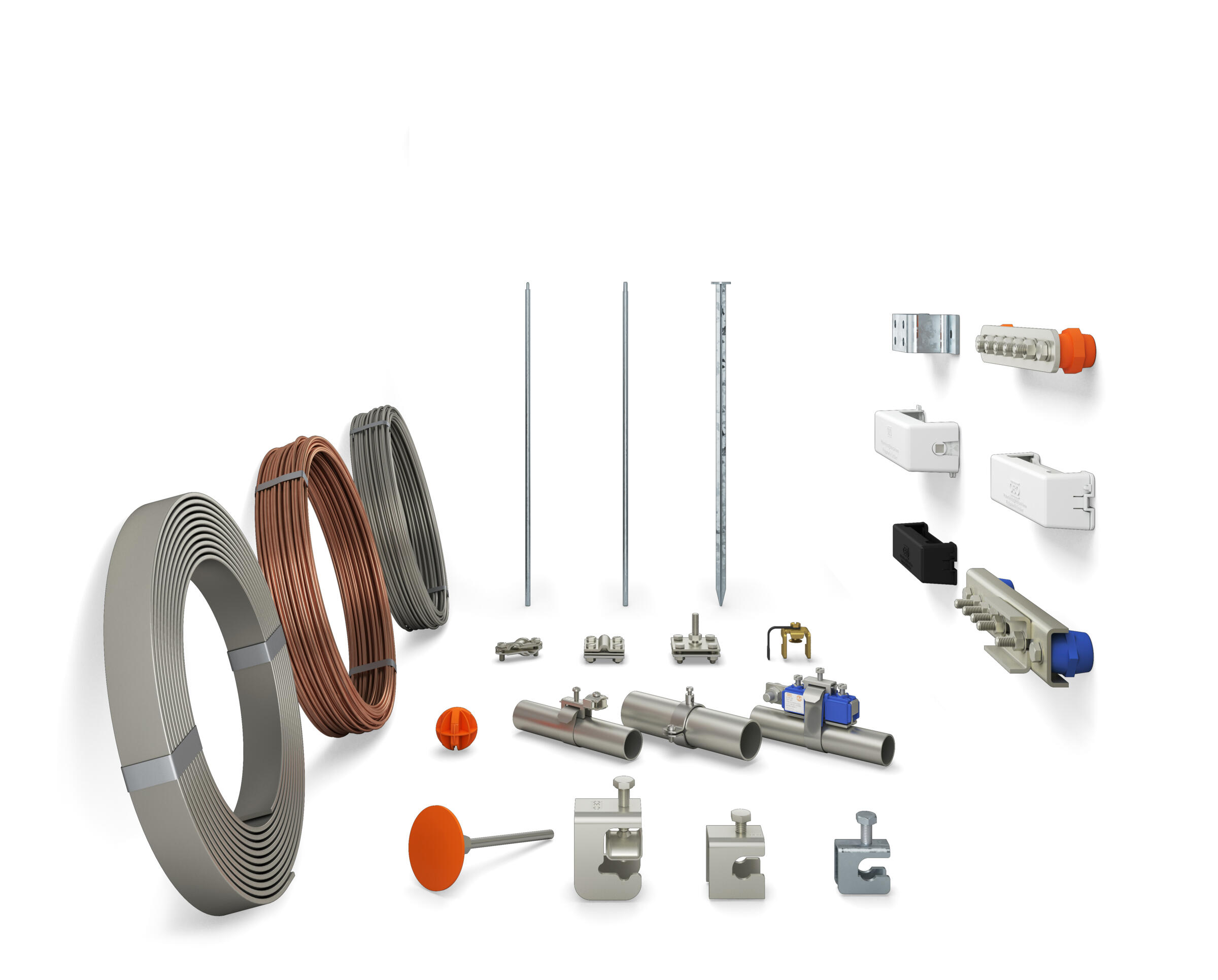Equipotential bonding and earthing
Equipotential bonding and earthing
In electrical installations, earthing and equipotential bonding are basic safety measures. They help to protect people from electric shocks, but also to help to ensure the functionality of the electrical system. Both concepts are closely connected, but perform different functions. The goal of earthing systems is to quickly and safely dissipate electrical energy in the event of a short circuit or lightning strike. If the conducted lightning current reaches the earthing system, for example, then over 50% of the energy is passed into the ground. Up to 50% flows into the building, back to the equipotential bonding system. Earthing systems act as a link to other protection systems, such as surge protective devices.

Earthing systems
There are two types of earthing systems, type A and type B. Type A earthing systems are typically earth rods and horizontal earth electrodes. Type B earthing systems are foundation and ring earth electrodes. OBO offers matching earth rods and other product solutions for both system types. These other solutions include earth rods and pipe and plate earth electrodes and conductor materials such as round and flat conductors made of different high-quality materials.
Equipotential bonding systems
Equipotential bonding systems form the interface between the external and internal lightning protection and the earthing system. They ensure that all conductive parts of an electrical system are brought to the same electrical potential. This prevents voltage differences, which can result in dangerous electric shocks in the event of a fault.
OBO solutions for earthing end equipotential bonding
OBO solutions for equipotential bonding include equipotential busbars, earthing clips and clamps as well as branch terminals. OBO offers its equipotential busbars for different applications, such as for use indoors and outdoors, for industrial applications and for potentially explosive areas. The BigBar DC equipotential busbar, for example, is suitable both for lightning protection equipotential bonding and for normal equipotential bonding in industrial applications. Accessories such as PCS sensor cards for recording pulsed or lightning currents, in addition to connection materials, round off the OBO range.